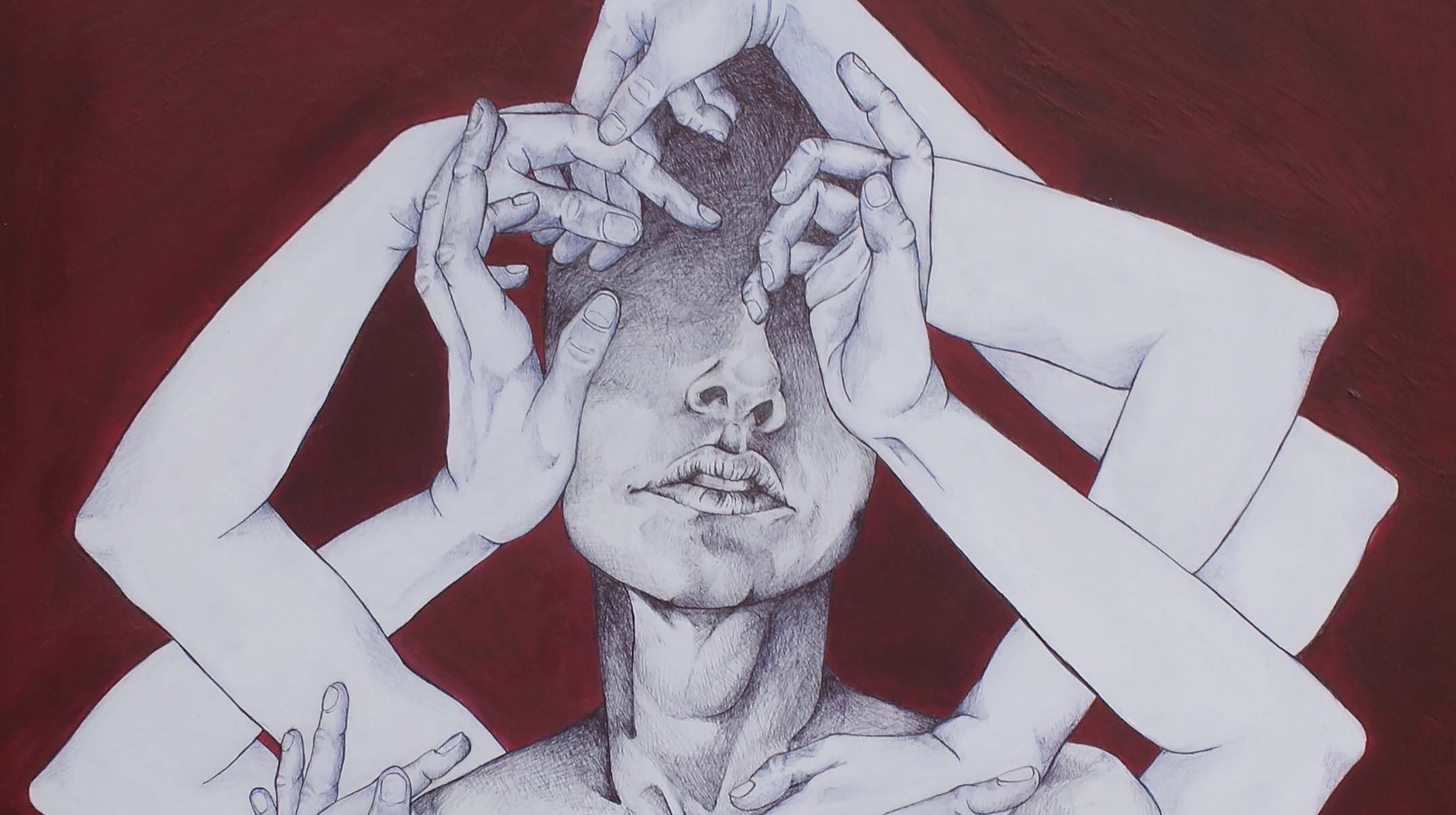Art with Impact Reflections in paint
Where art meets medicine
AT LEAST 42 PERCENT OF PHYSICIANS REPORT FEELING BURNOUT according to a recent survey, and depending on their specialty, they could also be experiencing depression or anxiety. It’s becoming so prevalent that the issue is coming up in medical school, while people are still physicians in training.
For Cheyanne Silver (MD '19), a recent graduate of Loyola University Chicago's Stritch School of Medicine, art has been an outlet for understanding and coping with the challenges that physicians face. Even when she was applying to medical school, Silver recalls people telling her about the rates of female physician suicide and urging her to pick a specialty that would let her have a family and a life outside medicine. She was being warned about burnout before even entering school.
This served as an inspiration for Silver's painting titled "Resilience," which was displayed in the National Academy of Medicine’s Expressions of Clinician Well-Being: An Art Exhibition. The exhibit called on people to use art to show what clinician burnout or resilience meant to them. Of her painting, Silver says, “It represents how I see these fellow physicians. They feel smothered and trapped behind the hands of outside influence—hands of patients’ reviews, of fellow colleague exhaustion, of society’s expectations, of administration shortening patient encounters. In the middle is the eye of the student, where I sit today. We are watching, observing, and being taught beneath the weight of this burned out profession.”
Silver’s artwork, along with other pieces from her bioethics capstone project “Reflection in Medicine Through Visual Media,” were also on display in the Stritch School of Medicine. We spoke to Silver about her art background and what she hopes the medical community will gain from her work.
Do you have an art background that proceeds your medical school career?
I have always been interested in art. In college, I took a semester of my sophomore year to study abroad in London at Camberwell College of Art. I studied painting and drawing for six months, and learned while I found it a great outlet for creative expression and stress, I didn’t want a career as an artist. I never enjoyed making art for others in the way a graphic designer is tasked with. Art to me is very personal. Since my time in London, and throughout medical school, I have continued art, both formally with large paintings and every day in my sketchbook.
Why do you think clinician burnout is something that should be addressed at the med school level?
Multiple studies have shown that the mental health of medical students deteriorates during their education. The problem with these studies is they have never found a singular reason for why, nor a solution. Personally, I think one way to combat eventual burnout is to discuss it openly when individuals are starting their careers. Currently our culture promotes a façade of professional stoicism. If we start changing that culture to encourage an open discourse about the stress and pressure we all endure, then we can find support and relatability in each other.






